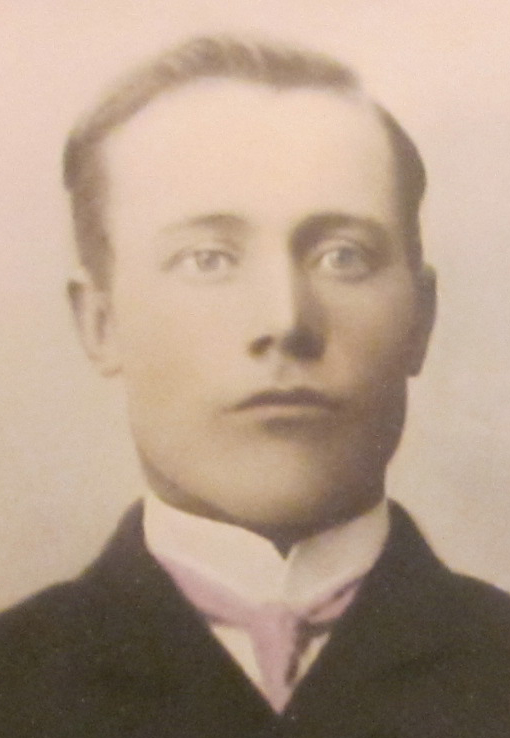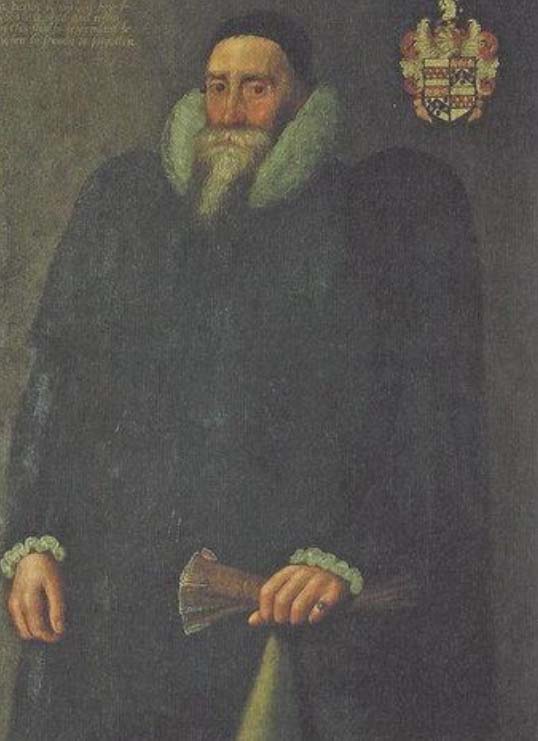|
Haploryhmän populaatiohistoriasta – Haplogroup population history."Juurista" - "The roots".
Genetiikkaa – The genetics
Antropologiaa – The physical anthropology L258 haplotyypistä – L258 haplogroup Y-DNA sukulaisuus UK/USA Herrick sukuun - Y-DNA relations Herrick family in UK/USA Yhteenveto - Summary Genetiikkaa – The geneticsKapealle Länsi-Suomen haploryhmien datalle verrattuna muuhun Euroopan väestöön on juuri tehty tietokoneajo ja tulokset alla. Taustaa asiaan löytyy enemmän Juuret sivustolla.Antropologiaa – the physical anthropologyUudet menetelmät ovat tuoneet tietoutta juuristamme. Tässä keskustellaan haploryhmämme genetiikkasta yleisesti. Kuvien ja menetelmän taustat on selitetty aikaisemmin ja tarkemmin Kalevan ja Untamon geenit - Physical anthropology pages in English language.Kun jatkossa ovat viitteet englanninkielisiä, niin jatketaan sillä. Attached is shown general PCA map done by blog keeper of Kalevan ja Untamon geenit - Enhanced Baltic Sea admixture tests. We copied this chart and some other PCA maps (with permission), and we can see that we have actually genetic Y-DNA relations.
L258 haplotyypistä – L258 haplogroupL258 - yleisin I1-haplotyyppi SuomessaSelkeästi suurin I1-haplomme yli kahden kolmasosan osuudella on L258, jonka arvioidaan syntyneen Rautakauden alkupuolella, noin 1800 - 1600 vuotta sitten Länsi-Suomessa. L258, kuten muutkin SNP-haplotyypit, on yhdellä miehellä tapahtunut mutaatio, joka on kaikilla hänen miespuolisilla jälkeläisillään. Haplopuu laajenee voimakkaasti heti L258:n jälkeen ja syntyy useita isälinjoja, jotka näkyvät projektin STR-tulossivulla L258:n alaryhminä. Niiden leviäminen on nykyisestä tilanteesta päätellen tapahtunut mahdollisesti Pirkanmaan seuduilta. On myös mahdollista että esimerkiksi Etelä-Pohjanmaalla on säilynyt vanhoja L258-linjoja. Tunnetulla SNP-mutaatiolla varmistettuja L258:n alahaploja ovat Z133, Z2045, L69 ja L296. Näistä suurin on Z133 noin kolmanneksen osuudella L258:sta. Se jakautuu puolestaan kolmeen ryhmään, joista kaksi on eteläpohjalaisia ja yksi itäsuomalainen. Vaikka Z133 on syntynyt rautakaudella, sen alaryhmät ovat runsastuneet korkeintaan tuhat vuotta sitten, mikä voi liittyä Etelä-Pohjanmaan asuttamiseen (ryhmät a ja b) ja karjalaisten ja savolaisten levintään (ryhmä c). Z133:n alahaploista viimeiseksi on levinnyt itäsuomalainen c-ryhmä, alkaen noin 700 vuotta sitten. Noin 1000 vuotta sitten runsastunutta L69:ää löytyy pääasiassa historiallisen Pohjanmaan alueelta. Sitä lähellä olevia haplotyyppejä löytyy myös Pirkanmaalta ja Satakunnasta, mutta L69:n alkuperä näyttäisi olevan Etelä-Pohjanmaa. Teksti kopioitu suoraa I1 Suomi Finland -projektin Family Tree DNAn sivulta. L258 accounts for over two of thirds of I1, and covers therefore clearly the biggest part of I1 haplo group. It is estimated that L258 is born in the beginning of the Iron Age, so approximately 1600-1800 years ago in Western Finland. L258, like all other SNP haplo types, is a mutation occurred in one man, and this mutation is subsequently in all of his male offspring. Haplo tree spreads out rapidly immediately after L258, and new father lines are being born who are shown in STR result page as subgroups of L258. On the basis of current setlement it seems that they have spread out from Pirkanmaa region in South-West part of Finland. It is also possible that L258 has remained for instance in Etelä-Pohjanmaa region in Western Finland. Rechecked subhaplos of L258 with a known SNP mutation are Z133, Z2045, L69 and L296. The biggest of these is Z133 that covers about one third of L258. It can further be divided into three subgroups of which two are of Southern Ostrobothnia and one of Eastern Finland. Even though Z133 has born in the Iron Age its subgroups have enlarged at most one thousand years ago, and this may be related to how South Ostrobothnia was being inhabited (groups a and b) and on the other hand how Karelian and Savo spread (group c). From subgroups of Z133, it is group c that has spread out latest, starting about 700 years ago. Y-DNA sukulaisuus UK/USA Herrick sukuun - Y-DNA relations with the Herrick family in UK/USA
* R. L. Herrick, Herrick Geneological Register, 3rd ed. rev., vol I-IV, Herrick Family Association, Inc, Holt, Michigan, 2016. Olen viestinyt satoja sähköposteja vuodesta 2013 lähtien USAlaisten kanssa ja pistän ohessa englanniksi muutaman rivin. Meille suomalaisille edes nämä viikinkijuuret ei ole mikään iso juttu. Kun nämä DNA-jutut ovat melko faktaa, on mielenkiintoinen asia, mistä löytyy yhteinen nimittäjä ja esi-isä Leicisteriläisten kanssa. Monet satunnaiset sukulaissuhteet voidaan selittää aikoinaan matkaajien tai sotien kautta. Olen siirtänyt vuosia tämän kappaleen kirjoittamiselta, kun asia on hiukan epämukava suomalaiseen mentaliteettiin. Kun meillä ei ole ollut kuninkaalisia, niiden esiintuominen on outoa päinvastoin kuin jossain muualla. Siksi kirjoitankin ohessa asiasta tarkemmin vain englanniksi. Minun DNA tulosten jälkeen 2013 on löytynyt muutama muukin suomalainen FTDNA tietokantaan, jotka ovat sukua tähän USA/GB Herrick suvulle. Herrick suku on taas selvittänyt Englannin Leicisterin Yliopiston tutkijoiden avulla ja yli 2000 DNA testin avulla juuriaan. Nyt on kuningas Erikin puolelta kymmeniä DNA sukulaisia ja meitä suomalaisia muutama ja yksi ruotsalainen 1700-luvun sotilas, joka voi muuten olla kanssa alunperin suomalainen.
Feedback from the member of the Herrick Association They have great roots as they are descendants maybe of the Viking King Eric from Leicester UK. Curtis J. Herrick, Jr., the DNA Adiministrator of the Herrick Association wrote me as follows: “My father learned of his Viking heritage from Herrick Genealogical Registers* written in the 1800s which contained American research performed in the UK during the same period. Our Herrick I1 heritage was later verified by the DNA testing that we were invited to join with University of Leicester the 2003 period. The data for large the over 2,000 person test, by now Dr. Turi King, included a 20 person Herrick surname group and is still producing results. This was a great serendipity event for the Herrick Family Association. Turi verified our Viking heritage and concluded that our Herrick name was largely from a single source, one person. The tests results include close matches with the English Herrick test members and suggest most Herrick individuals in the US are cousins. * R. L. Herrick, Herrick Geneological Register, 3rd ed. rev., vol I-IV, Herrick Family Association, Inc, Holt, Michigan, 2016. King Eric, the Viking leader, was defeated by King Alfred the Great, 849-899 AD. After the defeat, Eric and his force agreed with King Alfred that they would repopulate East Angle. I believe King Edward The Elder, the son of King Alfred, defeated a rebellion led by King Eric. History suggests King Eric was murdered by his unhappy followers who were not pleased with losing the rebellion and Eric’s harsh rule. King Edward in the east and his sister, Aethalflaed, the Lady of Mercia, in the west were successful were successful in driving the Danes, as the Vikings were called, to the north. Her forces took the city of Leicester from the Danes. We in the HFA (Herrick Family Association) are trying to learn more about the travel our part of the Herrick family to the Leicester area and their accommodations with the Normans. Mike Herrick in Wisconsin leading our research in this area. The Herrick descendants are well represented from the east of England to the Leicester area. We need to learn from the Herrick individuals in the east. Our Leicester y-DNA seems to be matching well the Herrick families in the east. We have research tasks ahead of us. The HFA needs ‘to reach out…’ as many say today. The HFA (Herrick Family Association) became associated with Family Tree DNA in the 2003-4 period to perform DNA family history research work with the aid of a commercial company. Our source selection group made a good choice.” More information about the case Uppala and old Birka city close 20 kilometres from later on settled greater Stockholm and on the other side Gulf of Bothnia sea Turku cities in Finland are not far a way from each other. Later even Swedish post office abt. 1600-talent used small boats for transportation post mail over neck of the Gulf of Bothnia sea and only during very windy autumn or winter time they have to get another solution. South-Western people have been close contact thousand years with Stockholm area people. Please obtain not used here words Swedish, Norwegian, Danish or Finnish as Scandinavian nations or present languages were not yet developed during Merovingian, Vendel era or in other words time before and still Viking time as we understand nowadays. The origin of the first common ancestor can be on the preset Sweden side, but still our the most Scandinavian Y-DNA results are coming for a while originally from the South-West Finland (close Vesilahti) area. If the first common ancestor is close the present Stockholm or Turku area 1000 years ago, the terms Swede or Finns are a little irrelevant as nations were not yet developed. After 1500-century many priest and other wealthy guys married over the Gulf of Bothnia and relations are well documented. Finland was actuallay a part of Sweden during those days called Eastland (Österland). During years was discussed possible common ancestor and glue possibilities
Scientific facts As far as we can conculde on the Finnish church books, geneological and Y-DNA results, Borg roots are in historical Vesilahti area at least before 1400-talent and something to do with Birkarl people and organisation. Several close Y-DNA hits are close Vesilahti. England was weak at the beginning of Viking Age. Scandinavian and Nortic people conquered and settled down Leicester area, where Herrick ancestors are coming. On the above and elsewhere is given impression about L258 discussion lines that our South Bothnia (Etelä-Pohjanmaa) and birkamen Y-DNA is older than 1000 years. The terms Swede or Finns are irrelevant still during Viking time as nations were not yet developed. The common roots and ancestors are somewhere close between present cities as Stockholm (Birka) and Turku (Vesilahti). Over ten miles close Leicester UK in the Repton area is found a lot of bones of Viking Great Army. If in the future is found similar Y-DNA as in Vesilahti area, the puzzle may get solution. Speculations The origins of common root between Leicester UK and Vesilahti area in South-Western Finland is a little puzzle. We may slightly think too much the matter on the standpoint of present times. One thousand years ago our world and situation was different on the many ways. The best glue suggestion for a while is presented by Curtis J. Herrick, Jr. from the Herrick Association: "Many Vikings from the area that is now Finland joined the raids on England at the island of Gotland." Yhteenveto - SummaryAnalysoidaan tuloksia myöhemmin.Renewed 29. March 2017 |







